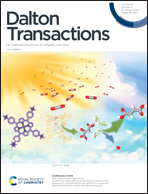Coral-like CoSe2@N-doped carbon with a high initial coulombic efficiency as advanced anode materials for Na-ion batteries†
Abstract
Na-ion batteries (NIBs) have attracted great interest as a possible technology for grid-scale energy storage for the past few years owing to the wide distribution, low cost and environmental friendliness of sodium resources and similar chemical mechanisms to those of established Li-ion batteries (LIBs). Nonetheless, the implementation of NIBs is seriously hindered because of their low rate capability and cycling stability. This is mainly because the large ionic size of Na+ can reduce the structural stability and cause sluggish reaction kinetics of electrode materials. Herein, three-dimensional nanoarchitectured coral-like CoSe2@N-doped carbon (CL-CoSe2@NC) was synthesized through solvothermal and selenizing techniques. As a result, CL-CoSe2@NC for NIBs at 2 A g−1 exhibits an ultrahigh specific capacity of 345.4 mA h g−1 after 2800 cycles and a superhigh initial coulombic efficiency (ICE) of 93.1%. Ex situ XRD, HRTEM, SAED and XPS were executed to study the crystal structure evolution between Na and CoSe2 during sodiation/de-sodiation processes. The aforementioned results indicate that the improved sodium storage property of CL-CoSe2@NC could be attributed to better electrode kinetics and a stable SEI film because of the 3D nanoarchitecture and the existence of the NC layer.



 Please wait while we load your content...
Please wait while we load your content...